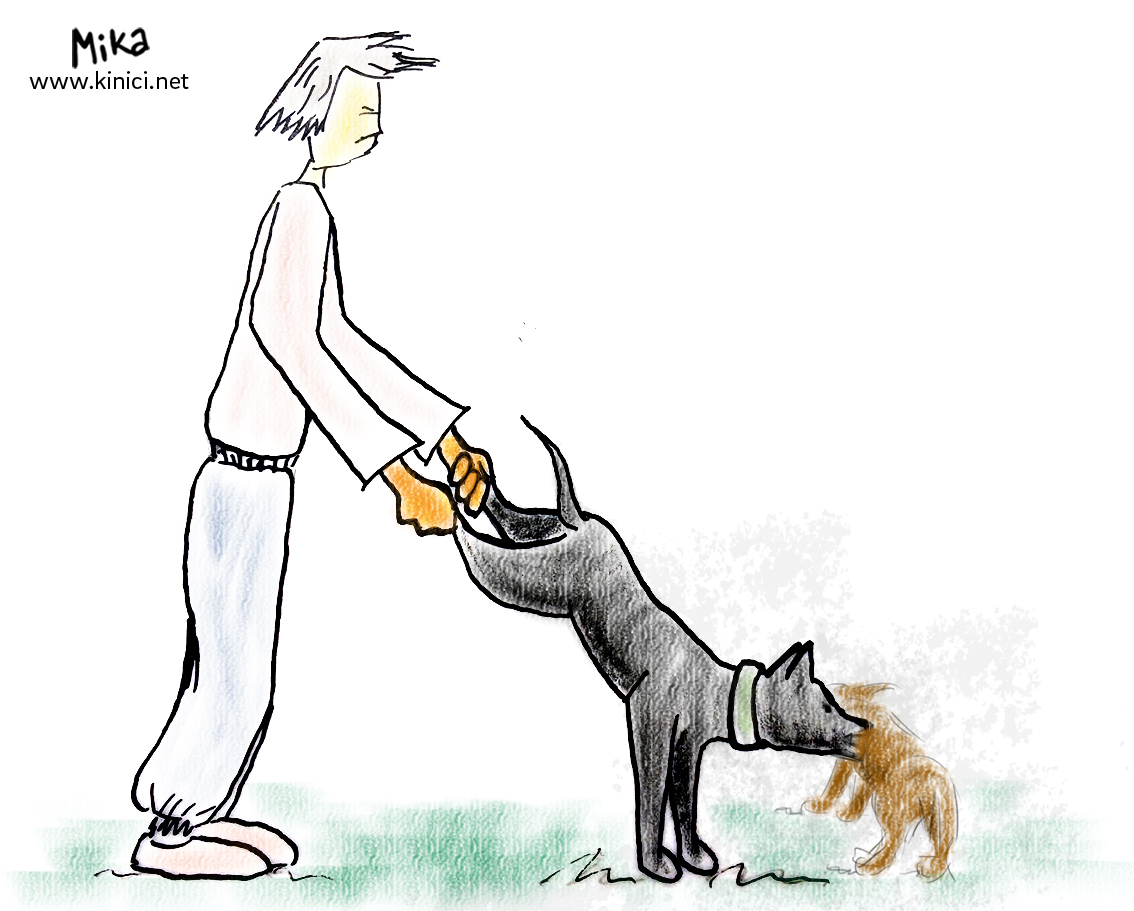Fights usually end when one dog withdraws and shows submission. Outcomes are often ear injuries or similar smaller wounds. Sometimes, a badly brought up dog (behavioural problems), a dog with excessive aggression genes or a dog whose aggression is out of control, as a result of improper upbringing, do not acknowledge submissive gestures of the other dog and such dogs will not stop attacking or will be very difficult to keep in control. These are dangerous dogs.
Sometimes it is very easy, sometimes very hard to disrupt a fight. It depends on strength of dogs, severeness of the fight, breaking up technique and how many humans is involved in it. Very common occurrence is that one of the owners does not react at all. Out of fear or for some other reason, the owner just stands, very often followed by yelling or screaming. Yelling or screaming will not help because it will be simply telling the dog that you are barking or growling, too, and probably preparing to join the fight. Incomparably more difficult, and sometimes even impossible, is to separate fighting dogs on your own. On the other hand, help of others like calming the dog by petting it, gentle talk while it growls or bites is doing more harm than good.
There are many methods to stop a fight. One of them is to strike a metal object against the ground. To produce unexpected sound that will startle dogs. It is very rare when this method does the trick. Pouring bucket of water on the fighters or drenching them with hose can be productive, but there are many, especially severe fights, where this did not give result. Coats or blankets thrown over each of the fighters (but not one over both), or sometimes only over disgruntled attacker whose opponent already accepted defeat, can stop the fight (even for a moment) or slow it down at least.
 Still, it is the best to act decisively – grab the opponents and separate them. Or that one person grabs the collar from the back with both hands – owner of the other dog does the same – and with inward movement of the hand tighten the collar and try to pull apart your dogs. Another good way is that one person grabs back legs of one dog and lift them, while the other owner does the same to their dog, and then part them, pull them opposite directions. When separated, do not let them loose, but, by pulling their legs, turn them so they have their backs turned away from each other.
Still, it is the best to act decisively – grab the opponents and separate them. Or that one person grabs the collar from the back with both hands – owner of the other dog does the same – and with inward movement of the hand tighten the collar and try to pull apart your dogs. Another good way is that one person grabs back legs of one dog and lift them, while the other owner does the same to their dog, and then part them, pull them opposite directions. When separated, do not let them loose, but, by pulling their legs, turn them so they have their backs turned away from each other.
If you happen to be accidental passer by, and for this or that reason you cannot help with separating the dogs – do not yell, scream, wave your hands or in any other way raise the level of excitement, but stay collected.
It is important that after the fight, both the dogs and the owners defuse the emotions and at least go for a short walk together, with dogs on leashes, so negative association does not form. This will help with soothing the animosity among dogs and lower the risk of a fight repeating on some other encounter. You must not explain your dog that it was bad and that it should not do again, or make them sit side by side while still under tension and stress.
